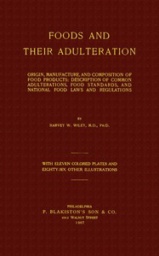

Foods and Their Adulteration (1907)
by Harvey Washington Wiley


Mineral coloring matters have sometimes been found in cakes and these are more objectionable by far than the artificial colors above mentioned. Where molasses from sugar-cane factories is used in the manufacture of cake a considerable trace of chlorid of tin or of zinc salts may be found therein, derived from the wash used in the centrifugal when drying sugar crystals or from the process of bleaching the molasses. This must be regarded as a very serious adulteration and molasses of this kind should never be used in the manufacture of cake nor for edible purposes upon the table. Sulfurous acid may also be absorbed during the process of bleaching the sugar-cane juices.🏁
Global Leaderboard
| # | Player | Time | Duration | Accuracy | WPM | pp | |
|---|---|---|---|---|---|---|---|
| 1 | |||||||
| 2 | |||||||
| 3 | |||||||
| 4 | |||||||
| 5 | |||||||
| 6 | |||||||
| 7 | |||||||
| 8 | |||||||
| 9 | |||||||
| 10 |


Mineral coloring matters have sometimes been found in cakes and these are more objectionable by far than the artificial colors above mentioned. Where molasses from sugar-cane factories is used in the manufacture of cake a considerable trace of chlorid of tin or of zinc salts may be found therein, derived from the wash used in the centrifugal when drying sugar crystals or from the process of bleaching the molasses. This must be regarded as a very serious adulteration and molasses of this kind should never be used in the manufacture of cake nor for edible purposes upon the table. Sulfurous acid may also be absorbed during the process of bleaching the sugar-cane juices.🏁